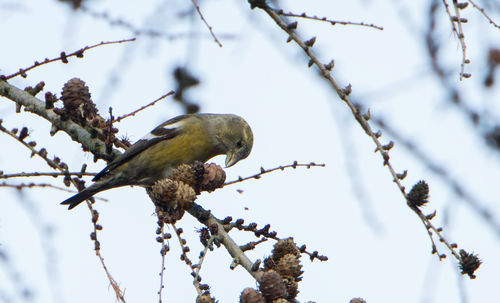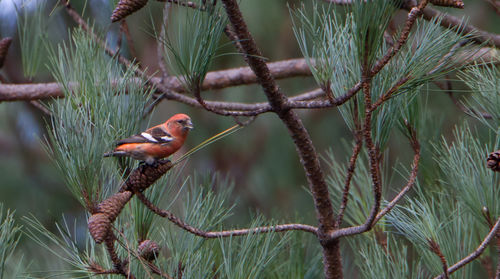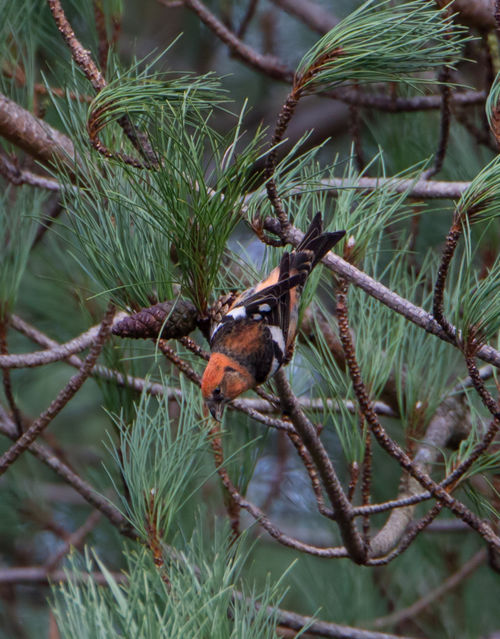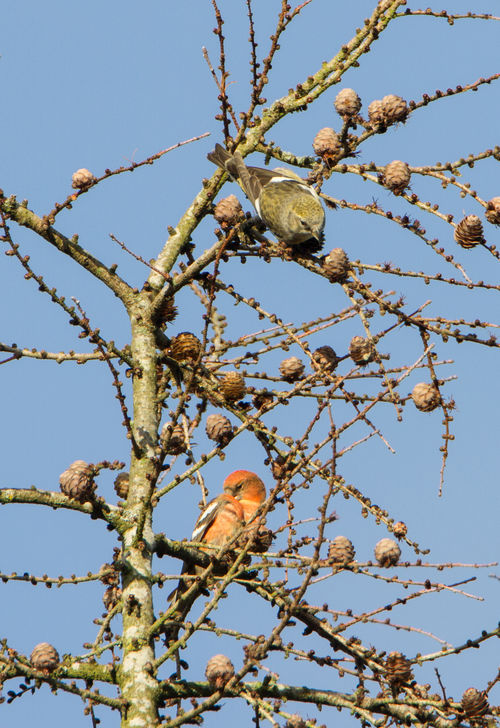Two-barred crossbills in Wyre Forest winter 2013-2014
Gary Farmer
Photographs by Peter Walkden who retains copyright.
(The following is part of an article written of the Wyre Forest Study Group Review 2013. The full article describes a Christmas walk in the Forest - Ed.)
A few Siskins Carduelis spinus flew overhead during the walk through the conifers, a Chaffinch Fringilla coelebs called from a group of larch trees and then the sound of a large group of Crossbills could be heard ahead. Just round the next bend a small group of birders had gathered, lined up along the path all scanning the trees where a mixed flock of Crossbills, Lesser Redpolls Carduelis cabaret and Siskins were feeding. It was not these that the birders were looking for however as amongst the flock were three (or more) Two-barred Crossbills Loxia leucoptera, a “lifer” for most if not all of the Study Group members and the real stars of the show! And very soon the birds were showing well, two males and a female. The Common Crossbill can have white wing bars so some caution was required but these birds had very bold wing bars and white tertial tips; the colour of the male birds was slightly more pink and their call was also very distinctive (a high-pitched toot almost like that of a toy trumpet).
Interestingly the Two-barred Crossbill has a slightly smaller bill than the Common Crossbill which allows it to feed from larch cones but these birds were feeding from pine cones in the mixed flock. This is a very rare visitor to Britain but in exceptional years (when the pine cone crop fails in Russia) large numbers push across Europe and into this country. 2013 was such a year with sightings from various suitable locations so we were incredibly lucky to have been at the right place at the right time. These birds had been spotted by Brett Westwood a few days earlier and the fact they had remained in the area was a real bonus for all.
Eventually the birds moved on so we continued into the valley and up through a strip of mixed woodland to see what else we could find.
Editor’s note. These birds were first found just over the border in Shropshire but they did wander around and were observed in Worcestershire. They remained in the area for several weeks.
Images
01. Female Two-barred Crossbill. Pete Walkden
02. Male Two-barred Crossbill. Pete Walkden
03. Male Two-barred Crossbill. Pete Walkden
04. Pair of Two-barred Crossbills. Pete Walkden



